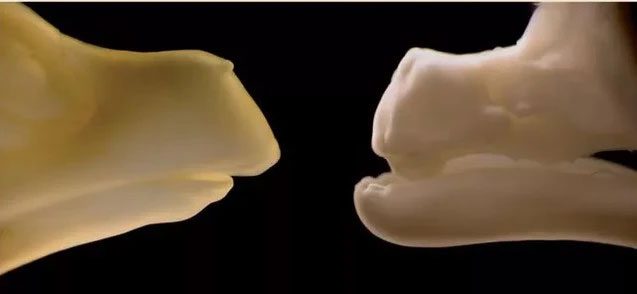Researchers have recently created several chickens resembling Talpids by modifying the genes of ordinary chickens to enable them to grow teeth.
Scientists have discovered a mutant chicken with a full set of chewing parts resembling those of a crocodile.

Ordinary chicken on the left and Talpid2 chicken on the right. The mutant jaw reveals emerging teeth.
The mutant chick, named Talpidd, also suffered from severe limb deformities and died before hatching. It was discovered 50 years ago, but until now, no one has examined its mouth.
Mark Ferguson from the University of Manchester stated: “What we found are teeth similar to those of a crocodile – not surprising since birds are the closest living relatives of this reptile.”
About 300 million years ago, the ancestors of all modern vertebrates branched into two lineages: mammals and reptiles/birds. The oldest reptiles, such as crocodiles and American alligators, have conical teeth. The first birds, known as theropods, did as well.
Then, around 80 million years ago, modern birds emerged without teeth.
Co-author of the study, John Fallon from the University of Wisconsin, USA, mentioned: “What would you expect bird teeth to look like? You would expect them to have teeth similar to their ancestors and closest living relatives.”
“Indeed, Talpid’s teeth are conical, similar to those of a theropod and closely resembling those of a baby crocodile or a theropod,” Fallon said. Theropods have mouths shaped like reptiles. It turns out that the development of beaks causes birds to lose their teeth.
This discovery has made scientists curious whether healthy chickens still possess the 80-million-year-old genetic pathway to produce teeth.
By making a few modifications to the expression of certain molecules in this process, researchers were able to induce tooth development in normally growing chickens. These teeth also resemble reptilian teeth and have many similar genetic characteristics, supporting the scientists’ hypothesis. None of these chickens were allowed to hatch.
This research could open new avenues for studying tooth regeneration in individuals who have lost teeth due to accidents or diseases.


















































